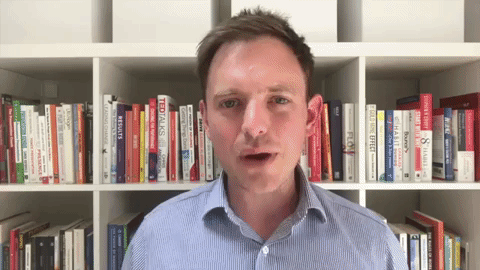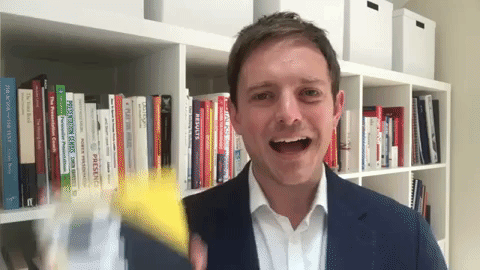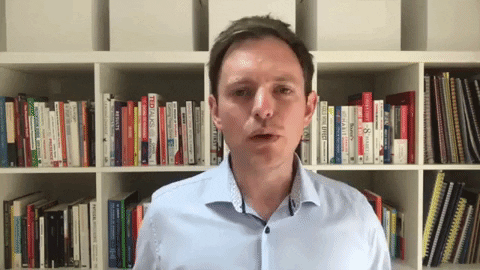Dominic speaks to Lucy Barkas on her LeaderX Podcast about communicating with impact, meeting people where they are and how you can give the ultimate performance by being yourself.
What To Expect From My Book IMPACT
Get My Book For Just 99p
A Questions Of Leadership
Stop Wasting Your Time
The Soft Skills Revolution: Why now, more than ever, it's good to talk!
We Need To Talk About Change
Do You Speak Millennial?
All Change. The time has come for a new style of leadership.
Recent political events in the UK have left the establishment across the globe reeling. What’s next? What will be the impact? Where do we go from here? Whilst the answers to these questions have yet to unfold, what is clear is that traditional methods of leadership aren’t working. This isn’t just a massive problem for the political class. Over the coming weeks and months the pain will be felt by business leaders and managers in every corner of the economy. Whether Brexit will leave Britain better or worse off in the longterm is irrelevant. The only certainty right now is uncertainty. Businesses that embrace the challenge are the ones that will succeed. Leaders who can galvanise their employees around a positive vision for the future and create forward momentum will reap the rewards. The map no longer reflects the territory. The time is ripe for pioneers.
For many people current events have created a generalised feeling of uncertainty and inertia. Motivational leadership is not enough. Rallying cries and calls to action will fall flat. If we want people to come on a journey with us, we need to engage them and help them understand their role. In order to create lasting positive change and unlock the opportunity that a shake up of the status quo undoubtedly creates, we need to step into a phase of “Activational Leadership”. We need to work with our organisations and teams to truly understand the lay of the land from all perspectives and then quickly create a consensus for action. The role of the leader becomes that of the editor-in-chief, sifting through the narrative to distil the best, most compelling story to tell and then presenting it in the most exciting way possible. It is vital that leaders have the ability to ask the important questions and then communicate their findings so that individuals understand their roles clearly and feel compelled to act. As leaders we need to help our people connect to a strong sense of their own identity and then enable them to embody it.
So what do I mean by Activational Leadership? Activational Leadership focuses on moving our followers to action and requires three key skills: the ability to listen, the ability to tell stories and the ability to coach. Combining these three attributes allows leaders and managers to empower employees to take responsibility and most importantly to act.
Top down initiatives in the current climate will, at best, be stalled by a disengaged workforce or, at worst, be rejected outright by people desperate to have their voices heard. If we want to heal division and sooth those in our organisations who feel disengaged or disenfranchised, we have to commit to taking the time to listen deeply. When people feel they have a voice, they feel able to contribute constructively to the conversation – if their audience is listening they don’t need to shout.
The next step for us as leaders is to uncover the story. Facts and figures are not enough to achieve buy-in. We need to paint pictures with words. We need to create opportunities for our employees to associate with the narrative and place themselves at the heart of the action. Storytelling is a shared experience and when the audience is compelled to re-tell or pass the story on, the ultimate form of engagement has been created.
The final step is then to adopt the role of coach and support our employees to create their own victories which will in turn drive the action forward. The ability to communicate in this way is a multiplier and creates leverage. Rather than one person trying to pull or push an organisation into motion, multiple catalysts for change are unlocked. The best coaches will then find ways to harness that energy and channel it to support the narrative.
This shift in leadership style won’t necessarily be easy and will certainly require effort. Whilst not all leaders and managers have these skills today, they can be taught. The companies that succeed will be the ones willing to take risks, adapt and invest in developing their people to rise to the challenge.
Stop Wasting Time - 3 Steps For More Effective Meetings
Have you ever been to an “update meeting”? These crimes against humanity usually take place first thing in the morning and require employees to pack themselves into crowded meeting rooms to hear progress reports on a variety of projects, most of which they are not personally working on. The concept of sharing information is of course sound but in my experience the execution of most meetings is awful. In theory the idea of keeping everyone in an organisation or team on the same metaphorical page or getting people together to share ideas is a good one but the reality is often a painful experience from which attendees take no real value. Now, I’m not a fan of having meetings for meetings sake but when it becomes necessary to get people together in a room there are three simple steps I recommend you take to protect your only finite resource: TIME.
1. Keep It Snappy!
It is common practice to schedule either 30 minutes or 60 minutes for meetings. The problem is that these go into the diary in back to back blocks and no sooner have you finished one event, than you are magically supposed to be in another location to kick off the next session. Not only does this lead to time slippage and people coming in late but it also encourages you to carry the energy from one meeting into the next. The result: If meeting A went badly, you walk into meeting B feeling negative regardless of the change in subject matter. I had the good fortune to listen to Sir Clive Woodward speak at the end of last year and he offered an ingenious (or even blindingly obvious!) solution to this problem: Create a rule that meetings can only last 15 minutes or 45 minutes and insist that 15 minutes of “travel time” must be scheduled after each event. Not only does this avoid slippage and lateness but in my experience it also makes meetings more productive. There is something about the shorter appointment time that seems to galvanise thinking, cut out waffle and force people to come to decisions. 30 minutes is comfortable. 15 minutes make things urgent!
2. Get Emotional
Good meetings have a clear objective that all participants are aware of and have bought into. However to be truely effective I think you need to go a level deeper and consider how you want to make others feel. All too often when I speak to people about why a meeting is taking place the answer I hear is “to tell people about what’s going on with the project” or “to inform the team about the changes taking place”. If your intention for your next meeting is similar then cancel it immediately and send an email instead! I’m serious! Human beings need to be engaged emotionally. Simply passing on information won’t cut it. If you want to create buy in or get a client excited about your offer, you have to think about what you want them to feel. Maybe you’re trying to inspire, perhaps you want to motivate, you may even want to challenge. Your starting point when thinking about your material should always be the emotional response you want to elicit in the audience. Work in this way and I guarantee that people will have a much greater connection to what you say. It will literally bring your meetings to life.
3. Take Action
There’s nothing more frustrating than arriving at a “follow up meeting” to discover that the things you thought you’d agreed last time round have not been done. Often in a desperate attempt to get out of the room we allow meetings to end without clearly defined action points. This is quite simply a waste of time. Accountability is key. I recommend sending out a list of next actions to all participants within 24 hours of every meeting. This list can be really simple – what the action point is, the time frame agreed for completion and the name of the person owning the action. Not only does it serve as a reminder of what was agreed, the list can then be circulated before any follow up is arranged to ensure progress (The document also forms the basis for the agenda of the next meeting, killing two birds with one stone.). Science also suggests that writing the next steps down is much more likely to produce compliance than a verbal agreement meaning that meetings actually result in action, which surely is the whole point!
I’d love to hear how you make the most of your time and ensure meeting are productive and purposeful so please share any tips in the comments box below.
Keep shining!
Dominic















